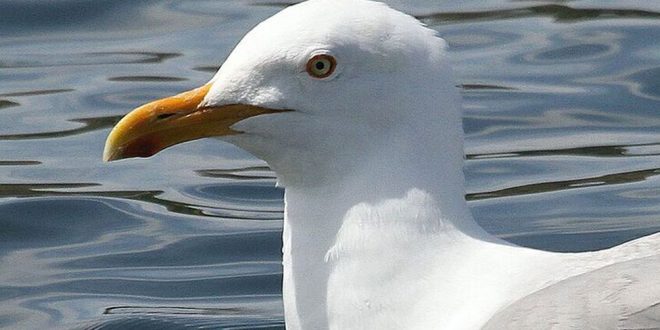Scientists discovered that the guano or feces of the migratory seabirds has a slight cooling effect in the Arctic during its warmer months. They found that there are higher levels of ammonia in the air in the Arctic sites that come from the feces of the birds.
“We identified a fascinating, albeit somewhat comical, connection between Arctic seabirds, atmospheric particles, clouds and climate,” says Betty Croft, first author of the study and research associate with Dalhousie’s Department of Physics and Atmospheric Science.
Together with Dal’s Randall Martin, Jeff Pierce and colleagues from an NSERC-funded research network called NETCARE, Dr. Croft used a combination of observations and computer modeling to assess the influence of Arctic seabird droppings on atmospheric particles and cloud formation.
“Bursts” of particles
Every summer, tens of millions of seabirds flock to the Arctic where their nitrogen-rich diets lead to droppings, or guano, that release ammonia into the air.
The molecules of ammonia cluster together with other gas molecules rising from the ocean. This forms small particles that act as “seeds” for cloud formation, because they collect, through condensation, enough vapours in the atmosphere to create tiny drops of water. Those droplets form low clouds in the sky.
The observed “bursts” of the newly formed atmospheric particles in the summertime sky can lead to changes in clouds, like how bright they can become. This study shows that clouds are getting brighter in the summer, thanks to more “seeds” present in the atmosphere. The brighter the cloud, the more solar energy it reflects back into space, cooling the area below.
Dr. Croft explains that clouds play a key role in controlling Arctic temperatures, making factors that influence clouds — like seabird guano — a hot topic in climate science.
“The Arctic, as we know, is experiencing rapid warming,” says Dr. Croft. “It’s very important to understand the set of interconnections that exist within the arctic climate system,” she says.
Connections in the climate puzzle
Dr. Croft’s study identifies a set of connections that hadn’t before been recognized as having a role in the Arctic climate system.
“The findings are surprising, and support the precautionary principle; there are likely [other, similar] interconnections between the living and non-living components of Earth’s climate system that we don’t yet understand,” says Dr. Martin, a co-author of the study and head of the Atmospheric Composition Analysis Group at Dal.
While the study now identifies Arctic seabirds as a piece of the complex climate puzzle, both Dr. Croft and Dr. Martin note the magnitude of this modest guano-initiated cooling effect has not been enough to prevent the warming currently observed in the present-day Arctic. The findings point to the importance of connections between ecology, chemistry and climate and highlight the need for further research to better understand such connections.
The study will also be useful momentum for upcoming research activity at the new Ocean Frontier Institute (OFI). The study brings forward the significance of atmosphere-ocean interactions. Dr. Martin, an OFI researcher, explains the same factors influencing atmospheric particles and cloud formation also influence visibility, drizzle and fog. This crucial ocean-atmosphere interaction and its impact on marine safety is one of OFI’s core areas of research.
“It’s exciting to identify a new connection,” says Dr. Croft. “I think our findings really highlight and remind us that Earth’s climate system is characterized by many interconnecting components.”
And sometimes, it just takes a whole lot of bird droppings to help us understand that one by one, and all together, every living thing has a connection to our Earth’s changing climate.
Agencies/Canadajournal
 Canada Journal – News of the World Articles and videos to bring you the biggest Canadian news stories from across the country every day
Canada Journal – News of the World Articles and videos to bring you the biggest Canadian news stories from across the country every day




“And sometimes, it just takes a whole lot of bird droppings to help us understand that one by one, and all together, every living thing has a connection to our Earth’s changing climate.”
It is heartening when some of the crap out there actually seems to make some sense.
Take this a little further and you realize that the earth and its climate is affected by each and every act of mankind. Singling out carbon dioxide emissions for drastic action is ridiculous since we have no idea of the effect of alternatives or of how much of of the apparent warming is actually a result of CO2 emissions.
All we really know is that human action is increasing CO2 levels in the atmosphere.